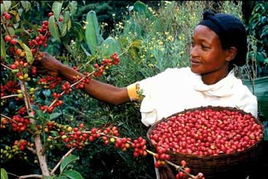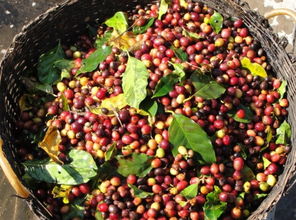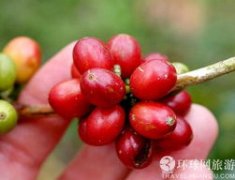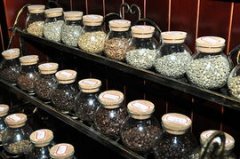How to harvest coffee can be divided into two categories
Harvesting methods can be divided into two categories, one is hand picking method, the other is shaking method.
(1) hand picking
With the exception of Brazil and Ethiopia, most Arabica coffee-producing countries are harvested by hand. Hand picking involves not only picking ripe bright red coffee fruits, but also sometimes along with immature cyan coffee fruits and branches, so these immature beans are often mixed with refined coffee beans, especially when refined by natural methods. If these beans are mixed with baking, they will produce a disgusting stench.

(2) shake-down method
This method is to hit the ripe fruit or shake the coffee branch with a random stick, so that the fruit falls and accumulates into a pile. Larger estates will use large harvesters, while small and medium-sized farms will harvest with a sea of people mobilized by the whole family. This method of shaking the fruit off the ground is easier to mix with impurities and defective beans than the hand-picking method, and beans from some places can be stained with a strange smell or fermented because the ground is wet. Producers of Robusta coffee beans such as Brazil and Ethiopia are mostly harvested in this way.
Countries harvested by shaking and falling method also use natural drying method to refine coffee beans. Coffee blossoms in spring, bears fruit in summer and harvests in winter, so it is very difficult to harvest and dry in places where there is no clear distinction between drought and rainy seasons. in the rainy season, it is impossible to use natural drying. Therefore, coffee is suitable for growing in areas with distinct dry and rainy seasons.

Important Notice :
前街咖啡 FrontStreet Coffee has moved to new addredd:
FrontStreet Coffee Address: 315,Donghua East Road,GuangZhou
Tel:020 38364473
- Prev

Coffee basics Coffee is generally picked several times a year
The harvest time and method of coffee vary from place to place, generally speaking, about once or twice a year (sometimes up to three or four times). The harvest time is mostly in the dry season. In Brazil, for example, around June, it starts in the north-eastern state of Bahia and ends in October in the southern state of Parana. The harvest period of Central American countries is from September to next year.
- Next

Coffee grading knowledge how to classify coffee grades
If the owners of two cafes are discussing, shopkeeper A says, "the coffee beans we use in our shop are NO.2 in Santos, Brazil. What about your store?" shopkeeper B said: our store uses Brazilian NO.1 of the same grade as Blue Mountain NO.1. The evaluation method adopted in Brazil is the deduction method, which is classified according to the number of defective beans per 300g of staple beans, with a total of seven grades from NO.2 to No.8, with a deduction of less than 4 points.
Related
- Beginners will see the "Coffee pull flower" guide!
- What is the difference between ice blog purified milk and ordinary milk coffee?
- Why is the Philippines the largest producer of crops in Liberia?
- For coffee extraction, should the fine powder be retained?
- How does extracted espresso fill pressed powder? How much strength does it take to press the powder?
- How to make jasmine cold extract coffee? Is the jasmine + latte good?
- Will this little toy really make the coffee taste better? How does Lily Drip affect coffee extraction?
- Will the action of slapping the filter cup also affect coffee extraction?
- What's the difference between powder-to-water ratio and powder-to-liquid ratio?
- What is the Ethiopian local species? What does it have to do with Heirloom native species?

